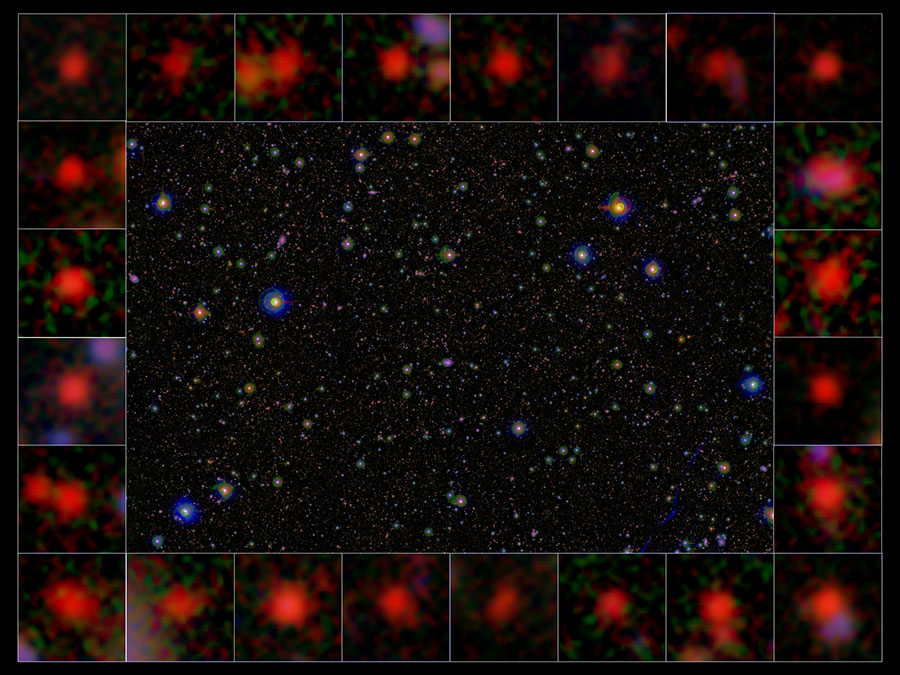Some galaxies, like the Milky Way, have maintained regular star formation for billions of years. Others, like large elliptical galaxies, are “red and dead.” Star formation in those galaxies shut off long ago. Astronomers have long suspected the nefarious influence of supermassive black holes, and new research has found the smoking gun.
An international team of astronomers led by Kei Ito at SOKENDAI (the Graduate University for Advanced Studies) in Japan performed a census of galaxies from 9.5 to 12.5 billion years away. They took their data from the Cosmic Evolution Survey (COSMOS) catalog, which combines data by many world-class telescopes, including the Atacama Large Millimeter/submillimeter Array and the Subaru telescope. COSMOS includes radio, infrared, visible, and x-ray data into a single comprehensive catalog of over a hundred thousand galaxies in the universe. The research team reported their results in a recent paper appearing in The Astrophysical Journal.
The team started by using visible and infrared wavelengths to sort their galaxies into two groups. One group had ongoing star formation, while the other group ended star formation. They team then used radio and x-ray observations to determine if the galaxies hosted an active supermassive black hole.
The radio and x-ray emission from each individual galaxy was far too weak to study in isolation. So instead, the astronomers combined the observations from many galaxies, building up a sense of how the “average” galaxy in each group behaved. They found that in the dead galaxies, the amount of radio and x-ray emission was too much to be accounted for by stars alone.
 The COSMOS survey region surrounded by images of galaxies used in this study. In these galaxies star formation ceased around 10 billion years ago. (3-color false-color composite images combining data from the Subaru Telescope and VISTA) (Credit: NAOJ)
The COSMOS survey region surrounded by images of galaxies used in this study. In these galaxies star formation ceased around 10 billion years ago. (3-color false-color composite images combining data from the Subaru Telescope and VISTA) (Credit: NAOJ)To the astronomers, this suggested that supermassive black holes were active in the dead galaxies. When the black holes become too active, they spew tremendous amounts of energy into their host galaxies. This makes the gas in the galaxies too hot, slowing down star formation. In some cases, the black holes can blow so much material out of the galaxies altogether that star formation completely stops.
This research suggests that something abrupt happened to galaxies in the early universe. Galaxies back then suddenly found their central black holes blasting away, killing star formation in entire populations of galaxies, well before the present epoch. Future research will be needed to understand exactly what happened.

